Cross-Dressing and Transformism in Cuba: An Erratic History

Text and Photos by Nester Núñez (Joven Cuba)
HAVANA TIMES – That night, the flocks of birds were more agitated than ever in Vidal Park in Santa Clara. It was an early Friday in 1994, and the Camilo Cinema had just shown the film Strawberry and Chocolate. I remember leaving, almost dragging my backpack, my emotions stirred. The embrace of Diego and David and the music of Jose Mar1a Vitier still moved me.
The atmosphere in the covered walkways and the park was lively. People passionately discussed the scenes, laughing, and I noticed someone wiping away a tear. The train to Matanzas was delayed, and with nothing more interesting to fill the time, several university friends and I followed the crowd like zombies, not knowing where they were going. We ended up at El Mejunje.
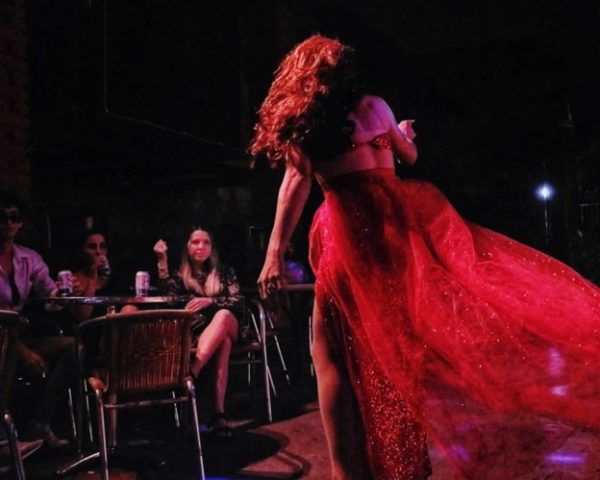
I had heard mixed things about El Mejunje. Some said it was a dive, others praised its excellent trova music, and some mentioned it was a hangout for homosexuals and lesbians. That was enough to make me enter with a few alarms activated, especially when I saw two men, bearded and mustached, kissing. I smiled, not out of scandal but out of nervousness. I was 18 years old; it was a world different from what I was used to seeing on the streets. Then the show started. Some overly made-up women in extravagant dresses imitated international artists with cheesy and exaggerated gestures—I didn’t like it at all. I left El Mejunje without knowing that it was a drag show. It was a time of changing mindsets amid the great economic crisis.
“The first transformism show at El Mejunje happened in 1992. It was a tribute to Freddie Mercury, a significant event because Silverio and the management of El Mejunje opened a door at a time when there was a lot of homophobia and transphobia in this country, and even transformism was codified and penalized. That’s the value it has; for the first time in an institution, they dared to put on that show, but it’s not the cradle of transformism. In reality, it’s one of the cradles.”
The speaker is Kiriam Gutiérrez, a trans woman, activist, and renowned actress. More than thirty years have passed since that time at El Mejunje, but to be honest, I don’t feel that I’ve managed to understand the essence of transformism as art. However, Kiriam sets aside my trivial question and begins to tell the history of this movement; something, I agree, much more necessary.
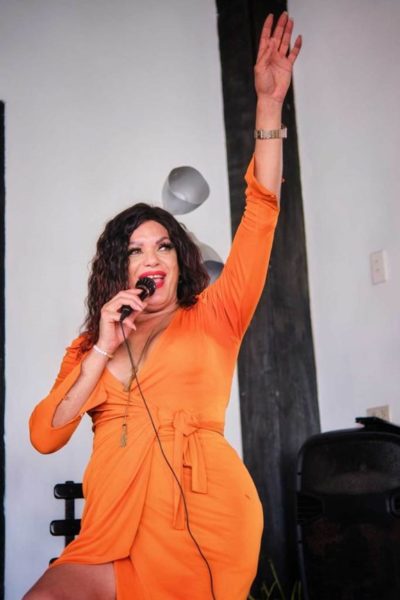
“In Havana, for example, the house of Anaya opened in 1986, and it lasted until around 1988 or 1989… It’s something that shouldn’t be forgotten. In fact, the first generation of transformists was born there, at Anaya’s house. Then there was La Güinera, about which a very beautiful documentary called Mariposas en el andamio (Butterflies on the Scaffold) was made…”
“Even before 1992, there were transformists who joined the fashion group Avances (Advances), led by Raul Castillo, to perform at campgrounds like Las Caletas, Los Cocos, Puerto Escondido… Supposedly, they were comic actors, but they weren’t; they were transformists who mixed with fashion and the runway. What happened was that, institutionally, they passed as comics, but no, it was transformism they were doing.”
Norge Espinosa joins the conversation with his knowledge of the performing arts and the world. We’re sitting in the shade, on a terrace in Havana, but as he speaks, I recall my small world as a university student, the boots I wore, my hair starting to grow out, the hunger and the blackouts. After studying, there was no energy left to travel from the university to the city, much less when, upon returning in the early morning, I’d have to walk nearly 10 kilometers. So, we resorted to drinking bad alcohol at the student club, dancing if you knew how, or sitting in any garden to chat with a guitar. The amateur artist movement was strong but seasonal. Most of us students were isolated, unaware of the many different realities that existed beyond our walls.
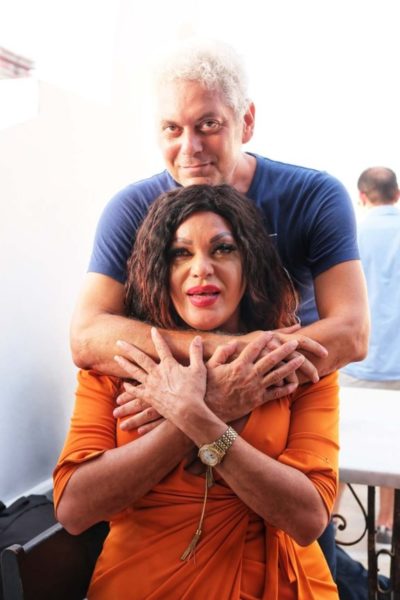
“The figure of the transformist didn’t exist within artistic evaluations; there were actors who were comedians, musical performers, and El Mejunje managed to make the existence of transformists visible while also highlighting the people with HIV/AIDS, who were confined to the Santa Clara sanatorium, the second one opened in the country, and who had no space outside that place to perform their artistic interpretations,” says Norge.
“In that first period of treatment, when people were diagnosed with the virus, they disappeared from public view, and suddenly, no one knew what happened to them. It was through cultural action that these people managed to go out to El Mejunje on some weekends. They performed small monologues, sketches, and little by little, the figure of the transformist appeared. In fact, the first company that El Mejunje had, Compañía Futuro (Future Company), with Samanta William Fox as the presenter, was made up of people who came from the sanatorium and who found a state of rehabilitation that went beyond health rehabilitation. They returned to reality and social life thanks to transformism.”
“A little different from Havana, because within Havana’s Los Cocos sanatorium, those transformist people managed to put on their shows, celebrate Valentine’s Day, collective birthdays, September 28…,” says Kiriam. “And very importantly, top-tier figures would come: Annia Linares, Rebeca Martinez, Mirtha Medina, Lourdes Torres… There was a very strong, very brave movement in the sanatorium, somewhat different from what happened in Santa Clara.”
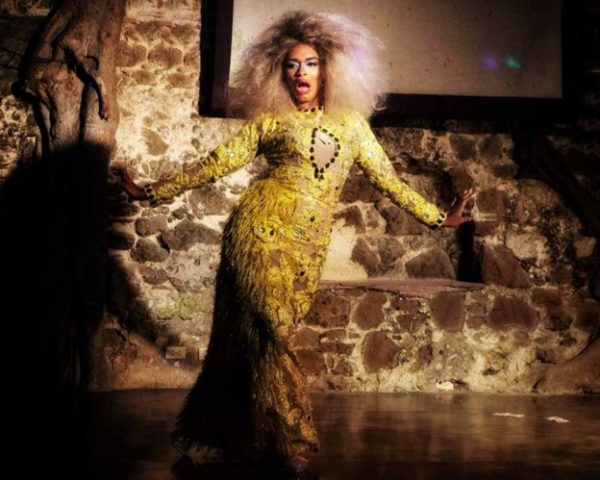
At that time, I was constantly traveling between Santa Clara and my hometown, Matanzas. In Santa Clara, I knew the train and bus terminals, the cinemas, and the baseball stadium, the Coppelia ice cream parlor, and the hamburger stands where they would write down your ID card number so you could only buy once a day. In Matanzas, my former high school classmates who studied at the tourism training school talked about dollars, prosperity, and the prostitution that had spread throughout Varadero.
Once, while traveling between the two cities, a very funny, very effeminate, and somewhat flirtatious young man sat next to me. I was still a teenager, though no longer as insecure, and I made my boundaries clear, which he then respected. At one point in the conversation, he said, “I work at a hotel in Varadero, in the entertainment department,” and he showed me a photo album. Most of the pictures were terrible, taken from a distance, but in the few portraits, what I saw were women. “That’s me,” he said. “We do a drag show. My stage name is Mariah Carey.”
I then remembered that show at El Mejunje that I had left almost at the beginning, and I realized how naive I had been. Questions ate away at me: Do you feel like a woman, or do you dress like one just for art? Do people like what you do? What’s the point of lip-syncing another artist’s voice? Almost the same questions come to mind when I talk to Kiriam. As before, I postpone them. There are more valuable facts in the air:
“In February 1995, the first drag song festival was held at the Teatro América in Havana, amid much controversy. It was one of the most important days of my life because trans women were able to access the América under our identity. We took photos outside, entered the theater, and the police couldn’t take us away. The paradox is that the police were there to protect us. That was a very significant day for our community. The history cannot be allowed to die.”

“Also,” says Norge, “it’s a history that’s told in pieces, very intermittently. Many of the people who were part of it are now outside Cuba, others are no longer here, and they’re not always called upon to share their experiences. I think individual testimonies matter a lot because they’re not recorded anywhere.”
So, I take another risk with the trivial question: from the perspective of a novice spectator, what can one expect from a transformism show?
“First, to be surprised,” says Norge, “and to recognize that what you’re seeing, if done well, is art. Many people go with the prejudice of ‘they’re just gay men dressed as women’ and all that, but then they discover they’re watching people who have trained for this, who have created an idea, a face, a body, and many of those first-time spectators end up becoming regulars, admirers of the figures they see on stage.”
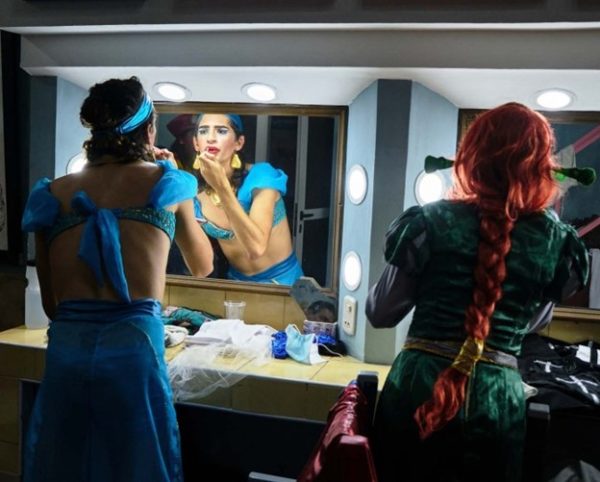
“Transformism requires a lot of training and rigor; it’s not just going on stage to lip-sync a song with a wig and a sparkly dress. All art is an illusion, but the transformist must be an illusion on a double or triple level. You have to make the audience believe you’re a woman, that you’re an extraordinary figure in many ways.”
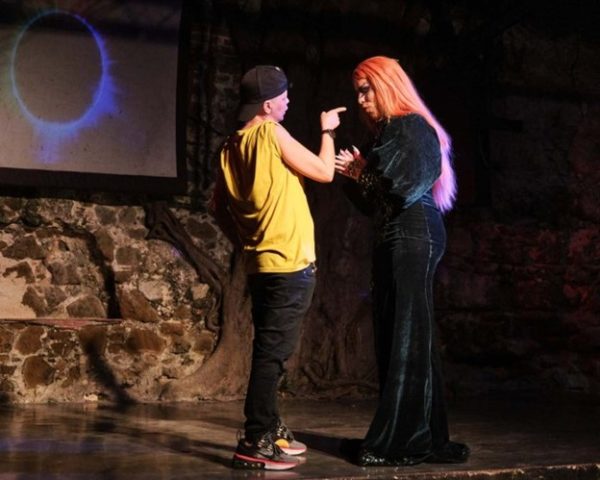
“The audience at a nightclub isn’t the same as the audience in a theater; they might praise you, put a bill in your cleavage, or they might reject you openly. You have to be prepared to always be the center of attention, to seduce from the first moment, a striking effect that you maintain for the duration of a song or the character you’ve invented. Some transformists use humor, engage in dialogue, go down to the tables… That figure on stage isn’t Kiriam or Mirtha Medina, it’s an identity you’re inventing, an extraordinary figure with whom you maintain a unique kind of dialogue that night. And I tell you, it’s very difficult to maintain that illusion when you’re so close up.”
From Norge’s words, I mentally revisit the last drag show I witnessed at Las Ruinas, the favorite place for the LGBTI community in Matanzas, to my time working as a photographer with Teatro El Portazo, whose director, Pedro Franco, included female characters played by men in his productions. The gossip, the militiawoman, the hero’s mother, the homeland… all of them men in drag… Transformism brought into and elevated to the language of musical, political theater… I recalled the time Yasiel Muñoz spent in the dressing room physically transforming into his character, Dalia La Pinareña. I then understood the art behind it. When Maya Sierra (Juan Luis Prado) steps onto the stage, you’re absorbed by the drama, the conflict she represents; it doesn’t cross your mind that she’s a man “in disguise.”

“Transformism encompasses everything,” says Kiriam. “There are many languages, a diversity of characters, of images, even interpretations. That first generation of transformists, I’m talking about 1986 to 1994, were all different. They took the names of real artists they impersonated at some point. Others created a character who could perform as Yuri or Annia Linares, Mirta Medina, Maggie Carlés, or Isabel Pantoja all in one night. Many started with the names of those artists, and as their performances evolved, they changed to their own names. For example, Imperio was first called Tanya, then Annia Linares, until she ended up being Imperio and performing as all of them. The transformist must know what theater is, what a stage is, the movements and positioning, the dialogue with the audience.”
“I had a foundation in theater courses and learned a lot from workshops with great Cuban actors before films and movies, where I managed to get in because I love it, and for me, it’s one of the greatest things in life, to keep improving, studying, asking, knowing. A performance is a dramatic work, and as such, I know it’s divided into three parts: presentation, development of conflict, and climax. I can’t start the song by kicking and punching; the dramatic work has a crescendo, and that’s based on studying what you’re going to perform.”
“Fortunately, in Cuba, there are people who can now make a living from transformism. They’ve achieved, because it’s been a hard battle, recognition. Some are highly admired in their own space, and the public comes to see them specifically.”
At this point in the conversation with Kiriam and Norge, I feel I’ve reconciled with myself and the subject of transformism, but one minor detail still intrigues me: the matter of tips in the cleavage… Kiriam nods and smiles before answering:
“At first, transformists didn’t charge. I’m talking about the years 1987 to 1998. Everything was very clandestine, and in private homes, they didn’t charge an entry fee, but there were other house parties where they did charge, though it was very little, five Cuban pesos at most. As a way of compensating for the show, the practice of giving tips started, which is also a custom imported from other countries where strippers and dancers are tipped. Now you see everything, a bit of speculation and curiosity, I’d say. You also see rivalry among artists. This one is better because they were given more, you know. Often, it’s not based on the performance or the artistic level, but on the particular taste of the spectators…”

The sun has set on the Havana terrace, and I think my curiosity has stolen enough time from Kiriam and Norge, but he doesn’t consider the subject exhausted:
“Now there’s an ugly thing happening in Miami, related to the arrival of prestigious transformists who had a very important career in Cuba. They’re performing, for example, at a landmark nightclub like El Azucar, and there’s a wave of rejection because some people accuse them of having been supporters of the Cuban regime, of having performed at the galas against homophobia, etc. That’s showing the cracks that also exist in a community like this one, which should be very united.”
“About that rejection in Miami of the figures arriving now because they were linked at some point to Cenesex, I’ll tell you something,” adds Kiriam. “Until 2009, transformism in Cuba was practiced at clandestine parties. It wasn’t until the appearance of the Bravísimo project, led by Maestro Carlos Reyes, that transformists were allowed to join variety shows. After that, it was through Cenesex, from their HSH project, and then the TransCuba Network, to give transformism some apparent legality in state-run venues…
“All transformists who wanted to get [into these spaces] had to go through Cenesex, join this network; it was mandatory. Many venues required a diploma or certificate, letter, or endorsement proving that you worked in that project or belonged to that network. Unfortunately, that’s how it was, and it still is. You had to go through the courses and graduate as health promoters or facilitators to be able to work.

“In 2014, the only evaluation was done where nine transformists were evaluated. Among them, I was the first trans woman evaluated by the Ministry of Culture and the National Council of Performing Arts as, and it’s paradoxical to say, a transformist actor of a project. Now they arrive in Miami and are being blacklisted, censored for having gone through Cenesex, and that was the only option to be able to work. You realize that political manipulation exists in art as well. It’s very sad that the same weapon they want to kill you with here in Cuba kills you in Miami.”
“I believe that transformism, as art after all,” says Norge, “can serve to heal those cracks, to tell all the people who share that code that if art is done sincerely, if it has an origin where we’ve shared the same pain, then we should help them move to another level of work, rigor, professionalism, taking advantage of what we’ve experienced.”
The sun sets, inevitably, and the conversation ends. I leave with the certainty that among the hundreds of individual stories yet to be told, many other plays, many movies, would emerge, and a whole book could be filled about transformism in Cuba. As always and in everything, there are more questions than answers. However, tonight it seems to me that the stars will cross-dress as shimmering sequins on the dark dress of the night.
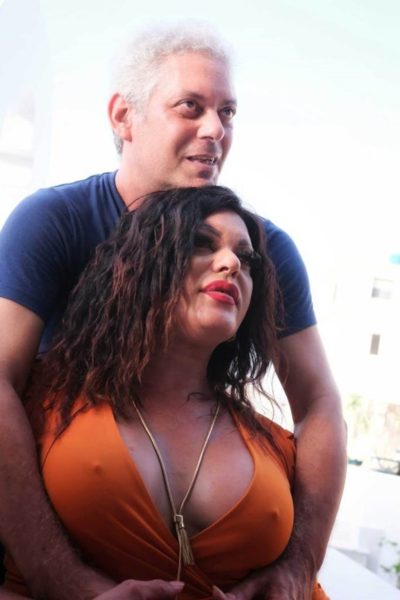
Originally published by Joven Cuba and translated and posted in English by Havana Times.






Quite surprised to read an interesting article here, instead of the usual stuff (i.e. your “fight against the dictatorship” from far away). Life (in Cuba and everywhere) consists of details, textures, experiences, history, and not just propaganda.